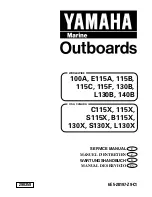
65MV/65MV-X
37
lected and configures your computer accordingly. If the battery charge runs
too low, the CMOS content will be lost and POST will issue a “CMOS in-
valid” or “CMOS checksum invalid” message. If this happens, you may
have to replace the battery. After the battery is replaced, the proper set-
tings will need to be stored in SETUP.
4-5 WHAT IS POST
• POST is an acronym for Power On Self Test. It’s a traditional name for the
routines that the BIOS uses to test and initializes the devices on your sys-
tem when the PC is powered on. Its meanings has grown to include any-
thing the BIOS does before the operating system is started. Each of POST
routines is assigned a POST code, an unique number which is sent to I/O
port 080h before the routine is executed.
4-6 BIOS UPGRADE
• Motherboards incorporate the system BIOS in a Flash memory component.
Flash BIOS allows user upgrades without the need to replace an EPROM
component.
• The upgrade utility fits on a floppy diskette and provides the capability to
save, verify, and update the system BIOS. The upgrade utility can be run
from a hard disk drive or a network drive, but no memory managers can be
installed during upgrades.
4-6.1 BEFORE UPGRADE BIOS
• It is recommended that you save a copy of the original motherboard BIOS
along with a Flash EPROM Programming utility(AWDFLASH.EXE) to a
bootable floppy disk in case you need to reinstall the BIOS later.
4-6.2 UPGRADE PROCESS
• “AWDFLASH.EXE” is a Flash EPROM Programming utility that updates
the BIOS by uploading a new BIOS file to the programmable flash ROM on
the motherboard. This file only works in DOS mode. To determine the BIOS
version, check the release date displayed on the top of your screen during
bootup. Newer dates represents a newer BIOS file.
















































